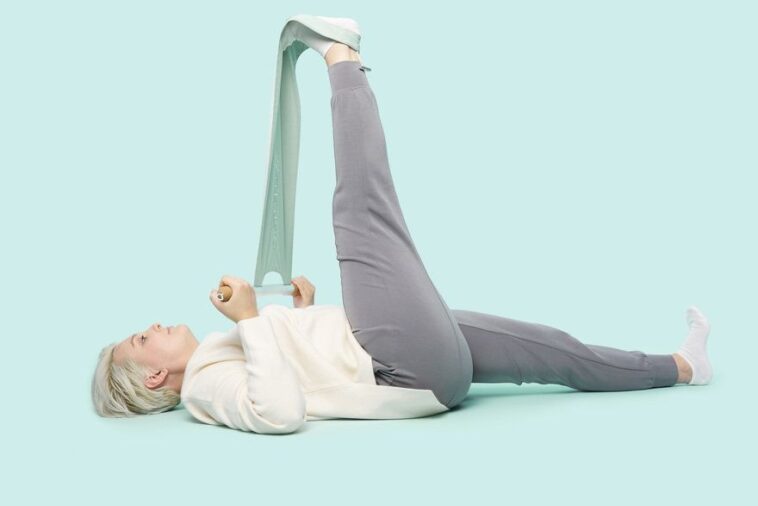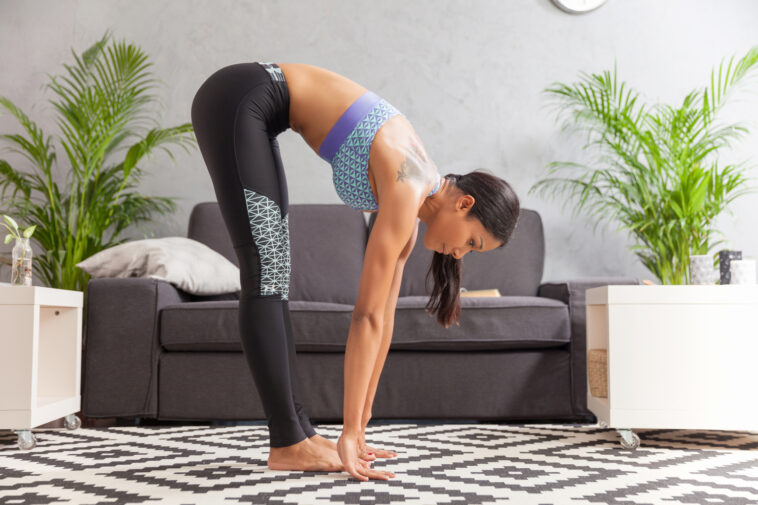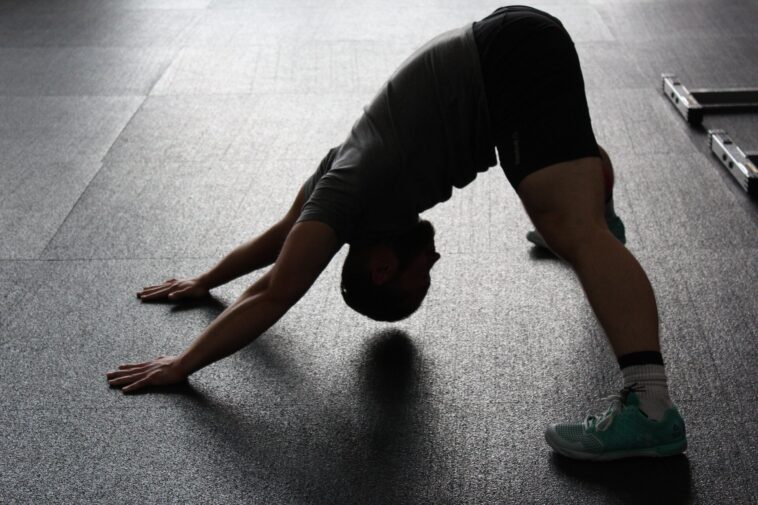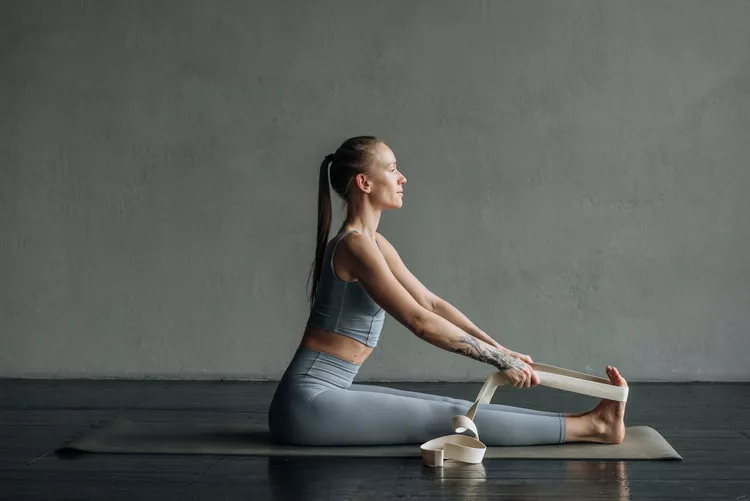Stretching is an essential component of any fitness routine, helping improve flexibility, reduce the risk of injury and promote overall well-being. It is also one of those physical training activities you do for the joy of doing it, regardless of the benefits it brings.
However many people make common mistakes when stretching, which can lead to decreased effectiveness or even injury. In this article we’ll explore some of the most common stretching mistakes and provide guidance on how to avoid them, ensuring that you get the most out of your stretching routine.

Mistake 1: Not Warming Up Before Stretching
One of the most common mistakes is diving straight into stretching without properly warming up your muscles. When your muscles are cold, they’re less pliable and more prone to injury. Attempting to stretch cold muscles can lead to strains, pulls or even tears.
Solution: Engage in 5-10 minutes of light aerobic activity before stretching. This can include jogging, jumping jacks or cycling at a low intensity. The goal is to increase blood flow to your muscles, raise their temperature and make them more receptive to stretching.
Mistake 2: Overstretching
Another common mistake is pushing your stretches too far, too fast. Overstretching can lead to muscle damage, and even contribute to a decrease in flexibility over time. It’s also important to remember that stretching should never be painful.
Solution: Focus on gentle, gradual stretches which feel comfortable. Ease into each stretch slowly, and stop when you feel a slight tension in the targeted muscle group.
Hold the stretch at this point, breathing deeply and allowing your muscles to relax into the stretch. As your flexibility improves, you can gradually increase the intensity of your stretches.
Mistake 3: Holding Your Breath

Many people inadvertently hold their breath while stretching. This can lead to tension in the body and decreased effectiveness of the stretch.
Solution: Concentrate on maintaining a steady, relaxed breathing pattern throughout your stretching routine. Inhale deeply as you ease into the stretch, and exhale slowly as you hold the stretch. This deep breathing helps promote relaxation and enables your muscles to stretch more effectively.
Mistake 4: Bouncing During Stretches

Bouncing or “ballistic” stretching, which involves quick, jerky movements, is another common mistake. This type of stretching can trigger the stretch reflex, causing your muscles to contract and increasing the risk of injury.
Solution: Focus on static stretches, where you hold a stretch in a comfortable position for 15-30 seconds. These persuade your muscles to relax and gradually lengthen without the risk of the stretch reflex.
If you want to incorporate movement into your stretches opt for dynamic stretches, which involve controlled, fluid movements which mimic the activity you are preparing for.
Mistake 5: Neglecting Certain Muscle Groups
Many people focus their stretching routines on the muscle groups they perceive as tight or problematic, neglecting other important areas of the body. This can lead to imbalances in flexibility and potentially contribute to injury.
Solution: Develop a well-rounded stretching routine which targets all major muscle groups, including the legs, hips, back, chest, shoulders and arms. This ensures that you’re maintaining balance and not inadvertently contributing to imbalances or asymmetries in your flexibility.
Mistake 6: Inconsistent Stretching

Inconsistency is another common pitfall when it comes to stretching. Many people stretch only when they feel tight, or before/after a specific activity, rather than maintain a regular stretching routine.
Solution: Aim to stretch at least 3-4 times per week, regardless of your activity level. Consistency is key when it comes to improving flexibility and reaping the benefits of stretching. Set aside dedicated time for stretching, and treat it as an essential part of your fitness routine.
Mistake 7: Stretching Without Proper Equipment
Attempting to stretch without the proper equipment can limit the effectiveness of your stretches and even lead to injury. For example, trying to stretch your hamstrings without a strap or band can cause you to round your back, putting unnecessary strain on your spine.
Solution: Invest in quality stretching equipment, such as the CastleFlexx line of resistance bands, stretching straps and mats. This equipment is designed to help you achieve a deeper, more targeted stretch while maintaining proper form and alignment.
Using CastleFlexx Equipment to Avoid Making Stretching Mistakes

CastleFlexx equipment can be invaluable in helping you prevent common stretching mistakes and achieve optimal flexibility. By using it correctly and maximizing its design features you can stretch safety, comfortably and beneficially whatever your level.
The CastleFlexx range includes:
- Resistance Bands: CastleFlexx resistance bands come at various resistance levels, enabling you to gradually progress your stretches and avoid overstretching.
- Stretching Straps: CastleFlexx stretching straps help you maintain proper form during stretches, reducing the risk of injury and ensuring that you’re targeting the intended muscle group.
- Stretching Mats: CastleFlexx stretching mats provide a stable, non-slip surface for your stretching routine, helping you maintain balance and alignment during your stretches.
By incorporating CastleFlexx equipment into your stretching routine and focusing on proper form and technique you can avoid common stretching mistakes and achieve your flexibility goals with style as one of the Castle Flexx patrons.
Conclusion
Stretching is a vital component of overall fitness and well-being, but it’s essential to approach it with care and attention to proper form and technique. By understanding and avoiding common stretching mistakes, such as not warming up, overstretching, holding your breath, bouncing, neglecting certain muscle groups, inconsistent stretching and stretching without proper equipment, you can ensure your stretching routine is safe, effective and beneficial.
Incorporating quality equipment, such as the CastleFlexx line of resistance bands, stretching straps and mats, can further enhance your stretching routine and help you avoid common pitfalls. By committing to a consistent, well-rounded stretching routine and focusing on proper form and technique, you’ll be on your way to achieving optimal flexibility and enjoying all the benefits associated with it, which you will rejoice in when you have them.
Remember, stretching is a journey, and progress takes time. Be patient with yourself, listen to your body, and celebrate the gradual improvements in your flexibility and overall well-being.




